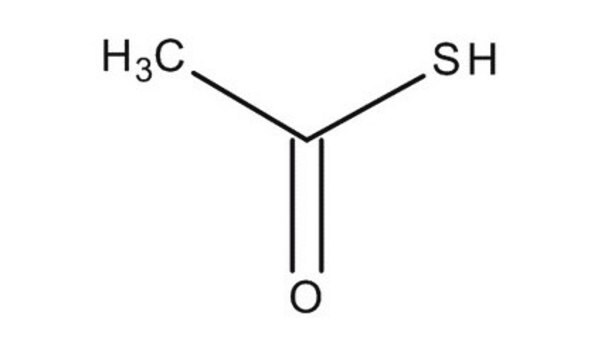251364
Acide formique
ACS reagent, ≥96.0%
About This Item
Produits recommandés
Qualité
ACS reagent
Densité de vapeur
1.6 (vs air)
Pression de vapeur
44.8 mmHg ( 20 °C)
Description
dilution test passes test
Pureté
≥96.0%
Température d'inflammation spontanée
1004 °F
Limite d'explosivité
57 %
Impuretés
≤0.4% Acetic acid
Résidus d'évap.
≤0.003%
Couleur
APHA: ≤15
Indice de réfraction
n20/D 1.370 (lit.)
Point d'ébullition
100-101 °C (lit.)
Pf
8.2-8.4 °C (lit.)
Densité
1.22 g/mL at 25 °C (lit.)
Traces d'anions
chloride (Cl-): ≤0.001%
sulfate (SO42-): ≤0.003%
sulfite (SO32-): passes test
Traces de cations
Fe: ≤0.001%
NH4+: ≤0.005%
heavy metals (as Pb): ≤0.001%
Chaîne SMILES
OC=O
InChI
1S/CH2O2/c2-1-3/h1H,(H,2,3)
Clé InChI
BDAGIHXWWSANSR-UHFFFAOYSA-N
Vous recherchez des produits similaires ? Visite Guide de comparaison des produits
Application
Mention d'avertissement
Danger
Mentions de danger
Classification des risques
Acute Tox. 3 Inhalation - Acute Tox. 4 Oral - Eye Dam. 1 - Flam. Liq. 3 - Skin Corr. 1A
Risques supp
Code de la classe de stockage
3 - Flammable liquids
Classe de danger pour l'eau (WGK)
WGK 1
Point d'éclair (°F)
121.1 °F - closed cup
Point d'éclair (°C)
49.5 °C - closed cup
Choose from one of the most recent versions:
Déjà en possession de ce produit ?
Retrouvez la documentation relative aux produits que vous avez récemment achetés dans la Bibliothèque de documents.
Notre équipe de scientifiques dispose d'une expérience dans tous les secteurs de la recherche, notamment en sciences de la vie, science des matériaux, synthèse chimique, chromatographie, analyse et dans de nombreux autres domaines..
Contacter notre Service technique










